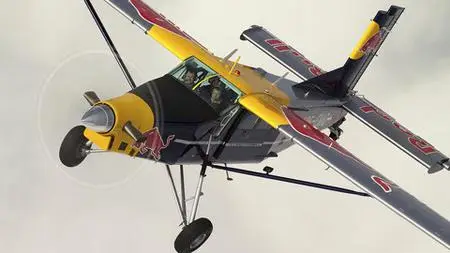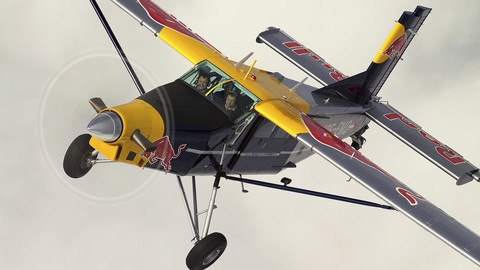Flying the powerful gas Turbine engine aircraft.
MP4 | Video: h264, 1280x720 | Audio: AAC, 44.1 KHz
Language: English | Size: 2.34 GB | Duration: 1h 51m
MP4 | Video: h264, 1280x720 | Audio: AAC, 44.1 KHz
Language: English | Size: 2.34 GB | Duration: 1h 51m
Turbo jet, Turbo prop and turbo shaft.
What you'll learn
Exploring the difference between petrol engines and gas turbines.
A simple transition from reciprocating piston engines to more powerful jet engines.
All from the comfort of your own home
Transition from conventional flying techniques.
Requirements
Beginners to experts follow through or just watch and learn.
Description
A gas turbine, also called a combustion turbine, is a type of continuous and internal combustion engine. The main elements common to all gas turbine engines are
an upstream rotating gas compressor
a combustor
a downstream turbine on the same shaft as the compressor.
A fourth component is often used to increase efficiency (on turboprops and turbofans), to convert power into mechanical or electric form (on turboshafts and electric generators), or to achieve greater thrust-to-weight ratio (on afterburning engines).
The basic operation of the gas turbine is a Brayton cycle with air as the working fluid: atmospheric air flows through the compressor that brings it to higher pressure; energy is then added by spraying fuel into the air and igniting it so that the combustion generates a high-temperature flow; this high-temperature pressurized gas enters a turbine, producing a shaft work output in the process, used to drive the compressor; the unused energy comes out in the exhaust gases that can be repurposed for external work, such as directly producing thrust in a turbojet engine, or rotating a second, independent turbine (known as a power turbine) that can be connected to a fan, propeller, or electrical generator. The purpose of the gas turbine determines the design so that the most desirable split of energy between the thrust and the shaft work is achieved. The fourth step of the Brayton cycle (cooling of the working fluid) is omitted, as gas turbines are open systems that do not reuse the same air.
Gas turbines are used to power aircraft, trains, ships, electrical generators, pumps, gas compressors, and tanks
A turboprop engine is a turbine engine that drives an aircraft propeller using a reduction gear. Turboprop engines are used on small aircraft such as the general-aviation Cessna 208 Caravan and Embraer EMB 312 Tucano military trainer, medium-sized commuter aircraft such as the Bombardier Dash 8 and large aircraft such as the Airbus A400M transport and the 60-year-old Tupolev Tu-95 strategic bomber.
An LM6000 in an electrical power plant application
Aeroderivative gas turbines are generally based on existing aircraft gas turbine engines, and are smaller and lighter than industrial gas turbines.
Aeroderivatives are used in electrical power generation due to their ability to be shut down and handle load changes more quickly than industrial machines.[citation needed] They are also used in the marine industry to reduce weight. Common types include the General Electric LM2500, General Electric LM6000, and aeroderivative versions of the Pratt & Whitney PW4000 and Rolls-Royce RB211.
Increasing numbers of gas turbines are being used or even constructed by amateurs.
In its most straightforward form, these are commercial turbines acquired through military surplus or scrapyard sales, then operated for display as part of the hobby of engine collecting. In its most extreme form, amateurs have even rebuilt engines beyond professional repair and then used them to compete for the land speed record.
The simplest form of self-constructed gas turbine employs an automotive turbocharger as the core component. A combustion chamber is fabricated and plumbed between the compressor and turbine sections.
More sophisticated turbojets are also built, where their thrust and light weight are sufficient to power large model aircraft. The Schreckling design constructs the entire engine from raw materials, including the fabrication of a centrifugal compressor wheel from plywood, epoxy and wrapped carbon fibre strands.
Several small companies now manufacture small turbines and parts for the amateur. Most turbojet-powered model aircraft are now using these commercial and semi-commercial microturbines, rather than a Schreckling-like home-build.
Small gas turbines are used as auxiliary power units (APUs) to supply auxiliary power to larger, mobile, machines such as an aircraft. They supply
compressed air for air conditioning and ventilation,
compressed air start-up power for larger jet engines,
mechanical (shaft) power to a gearbox to drive shafted accessories or to start large jet engines, and
electrical, hydraulic and other power-transmission sources to consuming devices remote from the APU.
Who this course is for
Best to have a PC and controllers with a good flight sim programme.



